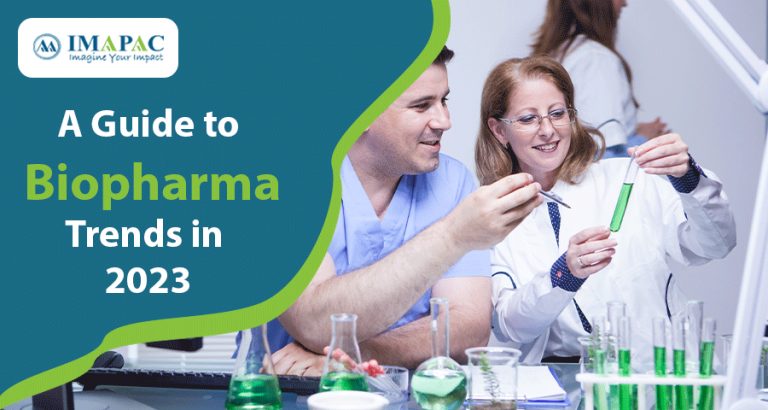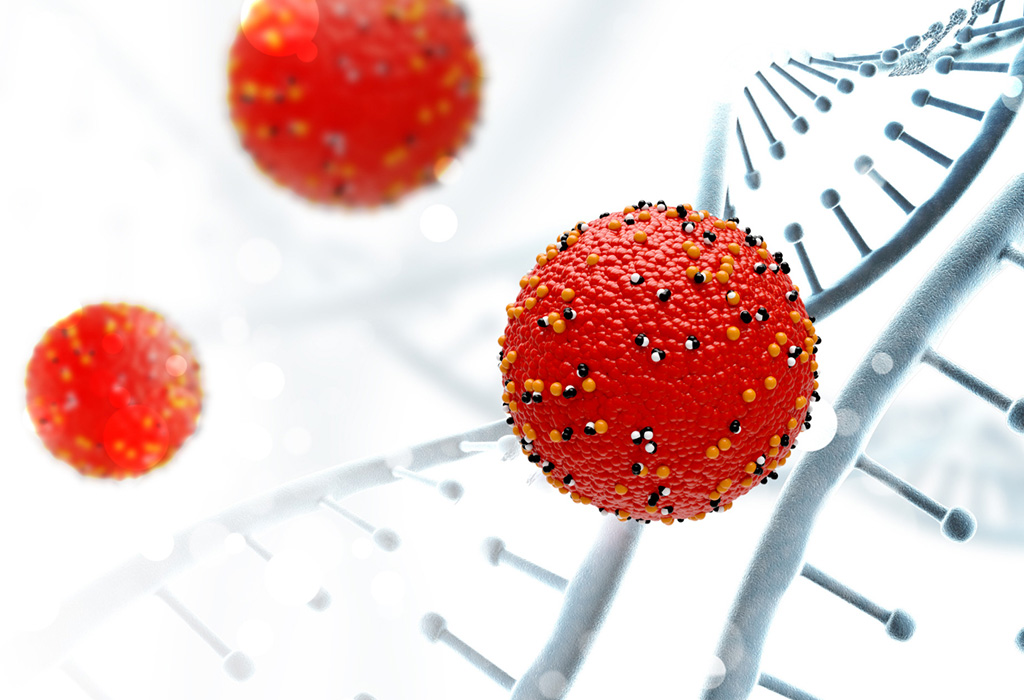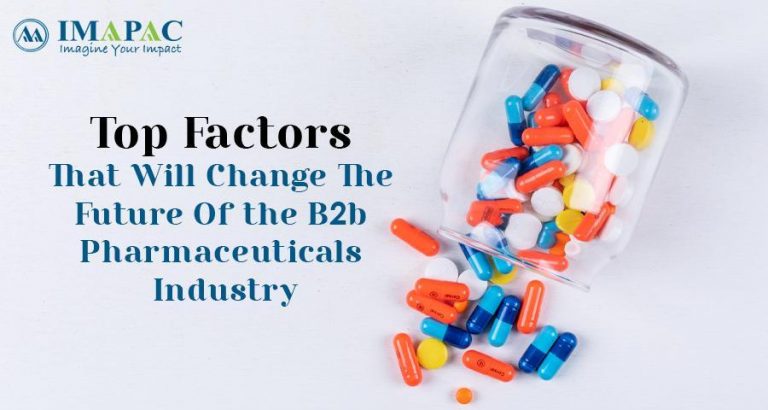A Guide to Biopharma Trends in 2023
As 2023 draws near, the life sciences sector is reaching a turning point. Organizations must choose whether to adopt a digital-first approach, employ cutting-edge technology solutions, or rely on outdated practices.
Adopting technologies to enhance workflows, efficiency, and patient care is part of the digital transformation process. Organizations that decide against going through a digital transformation run the risk of experiencing problems with data integrity, such as inadequate documentation and data silos.
So, biopharmaceutical manufacturers should take advantage of these technological advancements if they want to bring medications to market more swiftly and safely as well as outperform their rivals in the coming year and beyond.
-
Big Data To Transform The Biopharmaceutical Sector
Pharmaceutical production will adapt and conform to what is on the horizon as the global market expands. The industry will face new competition as a result of the swiftly developing and changing global marketplaces, which boost data sets in research and development. With software solutions for data analysis, traditional paper tracking investigations in CAPA processing will go more quickly and more affordably.
According to 38% of pharmaceutical industry respondents, Big Data will have the most considerable technological influence.
-
AI and Big Data To Work Together To Combine Human Reasoning With Machine Functionality
Machines can swiftly and objectively examine vast data, whereas humans can reason and invent. The question of the metabolic pathways an anti-fungal medicine exploited to generate liver damage could not be answered only by human thinking. A Washington University student used artificial intelligence to solve the puzzle.
When it comes to new technology, the pharmaceutical production sector is more advanced than other parts of the pharmaceutical industry. Artificial intelligence and robotics are lowering product waste and downtime on factory floors. For safer medicine transport and storage, single-use disposable alternatives have taken the place of open-transfer manufacturing methods.
The shop floor can use AI to detect even the minutest change in air quality or temperature 24 hours a day and respond right away to sterile production regulations. Any potential issue that could result in an expensive shutdown, a widespread product recall, or the need for equipment repair must be discovered before it harms a product.
-
Due to the expiration of biologic patents, biosimilar markets are expanding
Manufacturing must adjust to new markets as pharmaceutical regulatory organizations struggle with legal safety and procedural criteria for biosimilars, and the public cries out for reduced drug pricing and more access to drugs. They anticipate growth in the global market for biosimilar medicines. Latin American nations should be kept an eye on as they conduct their own research and development to produce and market biologic pharmaceuticals that have lost their patent protection.
Because 66 U.S. patents for biologics expire between 2023 and 2025, the FDA anticipates reviewing additional biosimilar applications in 2023.
-
Contract Developments, Partnerships, Acquisitions, and Mergers


According to IQVIA, the pharmaceutical industry’s 2018 value of $1.2 trillion will rise to $1.5 trillion by 2023. Organizations involved in contract development and manufacturing that need to expand globally and enhance speed and efficiency are merging. The aging population, which increases the demand for generic medications and coincides with the expiration of drug patents, is another factor driving mergers and acquisitions. Older businesses are collaborating with forward-thinking emerging investment growth businesses. With the purchase of a Swiss biotechnology business, Boehringer Ingelheim will focus on immune responses in cancer research. The global research alliance between Gilead and Galapagos promises new revolutionary therapeutic discoveries. After acquiring Allergan, AbbVie will increase its emphasis on treating inflammatory illnesses.
-
Advanced Compressed Air Technology
Reliable monitoring and quality standards have fallen under the radar in manufacturing risk management because of the uncertainty around specific rules. Pharmaceutical producers continue to follow the internationally recognized ISO 8573-1 requirements to provide the highest air quality for the unique process and product they produce. The ISO 8573:2010 guidelines’ classification of air quality reveals that compressed air produces the cleanest air. Particles, bacteria, and all liquid, vaporous, and aerosolized forms of water and oil are not present in compressed air. To keep an eye on these pollutants in specific sensitive locations and manufacturing processes, regular testing is necessary. There are some steps in the pharmaceutical manufacturing process when that level of air purity is unnecessary. Manufacturers struggle with deciding which components need compressed air purification, dividing the components, and using compressed air to monitor and test the components.
-
Manufacturing and Labeling of Cannabis Products and Other Over-the-Counter Drugs
Manufacturing is kept at bay by CBC product labeling arguments, which drive them to offer more information and postpone submitting their applications. The approved drug facts labeling is not the only information that manufacturers are advised to supply. They are still pending while the regulatory bodies settle the intricate legal implications before they can assert the legitimacy of a novel dietary supplement.
The pharmaceutical business is still looking into novel marijuana-based treatments, and the manufacturing branch needs to be prepared to enter the cutthroat market.
-
Modernizing, digitizing, and streamlining applications to balance safety, regulations, and manufacturing demands
Finally escaping from outdated paper processing systems is the pharmaceutical production platform or shop floor operations. The outdated operating systems are being updated and replaced with new digitizing software that streamlines industrial operations and lowers human error rates. They are capable of 24/7 better decision-making in real time. Rapid communication between the front office and the workstations on the shop floor is made possible by new mobile technology and cloud solutions. Teams may quickly obtain the data they need to ensure quality and compliance while accelerating workflow.
-
Continuous Processing and New Mixing Technology Features


It takes only a few minutes for raw materials to be transformed into the finished product thanks to mixing technology that has enhanced data documentation quality, formula correctness, and processing speed. This eliminates the need for big storage tanks and batch mixers. Multiple manufacturers’ needs are satisfied by flexible specialized controls. In order to lower the danger of contamination in pharmaceutical manufacturing plants, the mixers are made to be hygienic and simple to clean.
Merck & Co., Inc. and GEA, a leading producer of equipment and process technologies, worked together to test a continuous processing system. Over 15 million pills were produced over the 120-hour test period. They stated that ten different events with three operating teams working in three production zones over the course of 5-7 days would be necessary to perform a standard batch procedure to create the same amount of tablets.
-
Solid Dose Medicines Remain Effective
Oral-dose pharmaceutical medicines are not anticipated to be replaced anytime soon by new technology. Solid dosages that patients are accustomed to are still in great demand and will keep growing. The development of solid-dose pharmaceutical production is being driven by new solid-dose formats and increased productivity.
Tablets are predicted to have sales of more than $500,000 by the end of 2027 and be the favored solid dosage form, according to an article in Pharma Manufacturing. Of the 59 novel molecular entities that were approved in 2018, 24 were tablets with solid doses, and 7 were solid dosage capsules. After recently concluding a $1.2 billion gene therapy partnership with Paragon Bioservices, Catalent is now spending an additional $40 million to boost the controlled-release capabilities of tablets and capsules. In order to create oral solid dosage medications, Metrics Contract Services committed $80 million to a new production plant in North Carolina in 2018.
-
Procedures for instrument calibration and verification of sensors.
Pharmaceutical firms are learning more about manufacturing procedures. Modern manufacturing facilities use automation processing with real-time analysis to replace the outdated manual step batch processing and monitor quality control throughout all manufacturing processes. Measurements of flow, conductivity, temperature, pressure, calibration and verification sensors boost the safety of pharmaceutical products while saving time and money.
Recent advancements in temperature sensor technology allow for the elimination of pointless lab calibrations and data recording. Any issue triggers an electrical signal to a comparison calibrator if the sensor continuously performs an automatic on-site calibration of a referenced temperature range of 118 to 121 degrees centigrade. Instantaneously, an alarm or error message is sent.
These technological advancements in the living sciences aren’t piped fantasies; they actually exist. To improve corporate results and provide life-saving cures in 2023, organizations must promote resilience and welcome innovations. Otherwise, they run the danger of losing ground in a cutthroat market.





